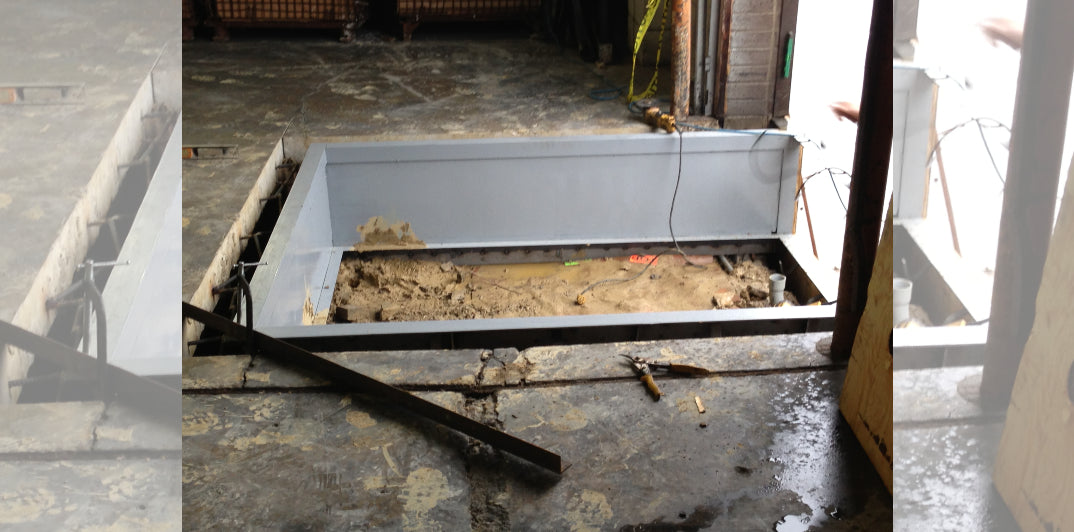Effective Dock Repair Service Techniques: Making Certain Architectural Integrity
Making certain the structural stability of anchors through effective repair service methods is vital for the longevity and safety of aquatic facilities. Consequently, selecting the ideal repair work materials, such as composite products and corrosion-resistant alloys, is essential for resilience.
Analyzing Dock Damages
Evaluating dock damage is an essential initial step in making sure the structural integrity and safety and security of any kind of docking center. This initial evaluation entails a thorough evaluation to recognize both visible and surprise damages. Trick aspects to examine consist of the dock's foundation, pilings, decking, and hardware. Each part must be looked at for indicators of wear, rot, corrosion, or various other kinds of degradation that could compromise the architectural honesty.
Structural designers or qualified examiners generally do these evaluations making use of specialized tools and techniques. Underwater evaluations might employ finder devices or remotely operated cars (ROVs) to spot submerged damages. Above water, aesthetic evaluations are enhanced by using moisture meters and other analysis devices to reveal underlying issues not promptly noticeable to the naked eye.

Finding Fixing Materials
Picking the suitable fixing materials is a pivotal step in the dock repair process, one that directly affects the longevity and performance of the fixed structure. Material selection should be driven by variables such as ecological problems, load-bearing requirements, and compatibility with existing dock components.
In enhancement to timber, composite products are increasingly popular as a result of their longevity and reduced maintenance needs. Composites, normally made from a blend of plastic and timber fibers, use superb resistance to rot, insects, and UV damages. For metal docks, picking corrosion-resistant alloys such as galvanized steel or marine-grade aluminum is vital to avoid rust and make sure architectural stability in saline water conditions.
Epoxy materials and marine-grade sealers are crucial for repairing fractures and sealing joints, giving a water-proof obstacle and boosting the dock's overall stamina. By thoroughly selecting top notch materials, dock fixings can attain long-lasting outcomes, consequently securing versus future degradation and ensuring safe, trusted usage.
Structural Reinforcement Strategies
Reliable structural reinforcement strategies are important in ensuring the security and longevity of dock repair work. This approach is specifically effective for docks subjected to hefty tons or extreme environmental problems.
Another important method is the application of fiber-reinforced polymers (FRP) These materials supply high strength-to-weight proportions and superb resistance to rust, making them ideal for strengthening concrete or wooden anchors. FRP can be applied in sheets or strips and bound with epoxy materials to enhance architectural integrity.
Supporting and securing systems likewise play a critical function in structural support. Cross-bracing, utilizing metal or wooden beam of lights, can combat lateral forces, reducing persuading and movement. Securing systems, such as helical piers or driven stacks, provide a steady structure by moving lots to much deeper, a lot more secure soil layers.
Last but not least, the combination Read Full Article of load-distribution plates can aid disperse weight more uniformly across the dock's surface area, alleviating click to find out more local anxiety points. These techniques collectively make certain that docks continue to be safe and robust, with the ability of standing up to the roughness of their functional atmosphere.
Advanced Fixing Approaches

Another sophisticated strategy includes undersea welding, which enables repairs to be conducted without the demand to dewater the area. This method is particularly helpful for attending to structural concerns in submerged dock components, guaranteeing minimal disruption to procedures. Improved welding strategies, coupled with robot systems, supply accuracy and reliability, consequently expanding the life expectancy of the dock.
In addition, cathodic protection systems are carried out to avoid corrosion in metal dock structures. By using sacrificial anodes or satisfied current systems, these strategies properly minimize the electrochemical procedures that lead to material degeneration.
Finally, progressed tracking technologies, such as structural health and wellness surveillance (SHM) systems, offer real-time data on the condition of dock frameworks. These systems enable positive upkeep and timely treatments, eventually guaranteeing the lasting structural honesty of the dock.
Maintenance and Avoidance
Maintenance and avoidance are fundamental principles that underpin the longevity and security of dock frameworks. Normal assessments are critical, permitting early discovery of wear and tear, possible weaknesses, and environmental influences. A positive technique, involving regular look for rust, rot, and structural shifts, alleviates pricey fixings and extends the dock's operational life.
Safety nets should include applying safety finishes to steel elements to defend against rust and using cured timber my sources to resist degeneration. In addition, ensuring appropriate drain and air flow can prevent water accumulation, which is a typical reason for structural degradation. Integrating high quality products and sticking to manufacturer standards throughout building and construction and repair service stages likewise play important functions in improving durability.

Educating employees in dock upkeep finest techniques guarantees constant application of safety nets. Leveraging technological advancements, such as drones for examinations and sensing units for real-time surveillance, can better improve maintenance efforts. By prioritizing upkeep and prevention, dock owners can make sure structural integrity, operational safety, and affordable administration over the dock's lifespan.
Conclusion
In verdict, preserving the structural honesty of marine facilities requires detailed dock repair methods. Advanced fixing strategies, coupled with routine maintenance techniques, ensure the dock remains safe and functional under varied environmental problems.
Making certain the structural integrity of anchors through efficient repair work techniques is critical for the long life and safety of aquatic centers.Choosing the ideal fixing products is an essential action in the dock remediation process, one that directly affects the longevity and efficiency of the repaired structure.Effective architectural reinforcement techniques are crucial in making sure the stability and durability of dock fixings. By prioritizing maintenance and prevention, dock owners can ensure structural honesty, operational safety, and affordable monitoring over the dock's lifespan.
In verdict, preserving the structural stability of marine facilities requires extensive dock repair work techniques.